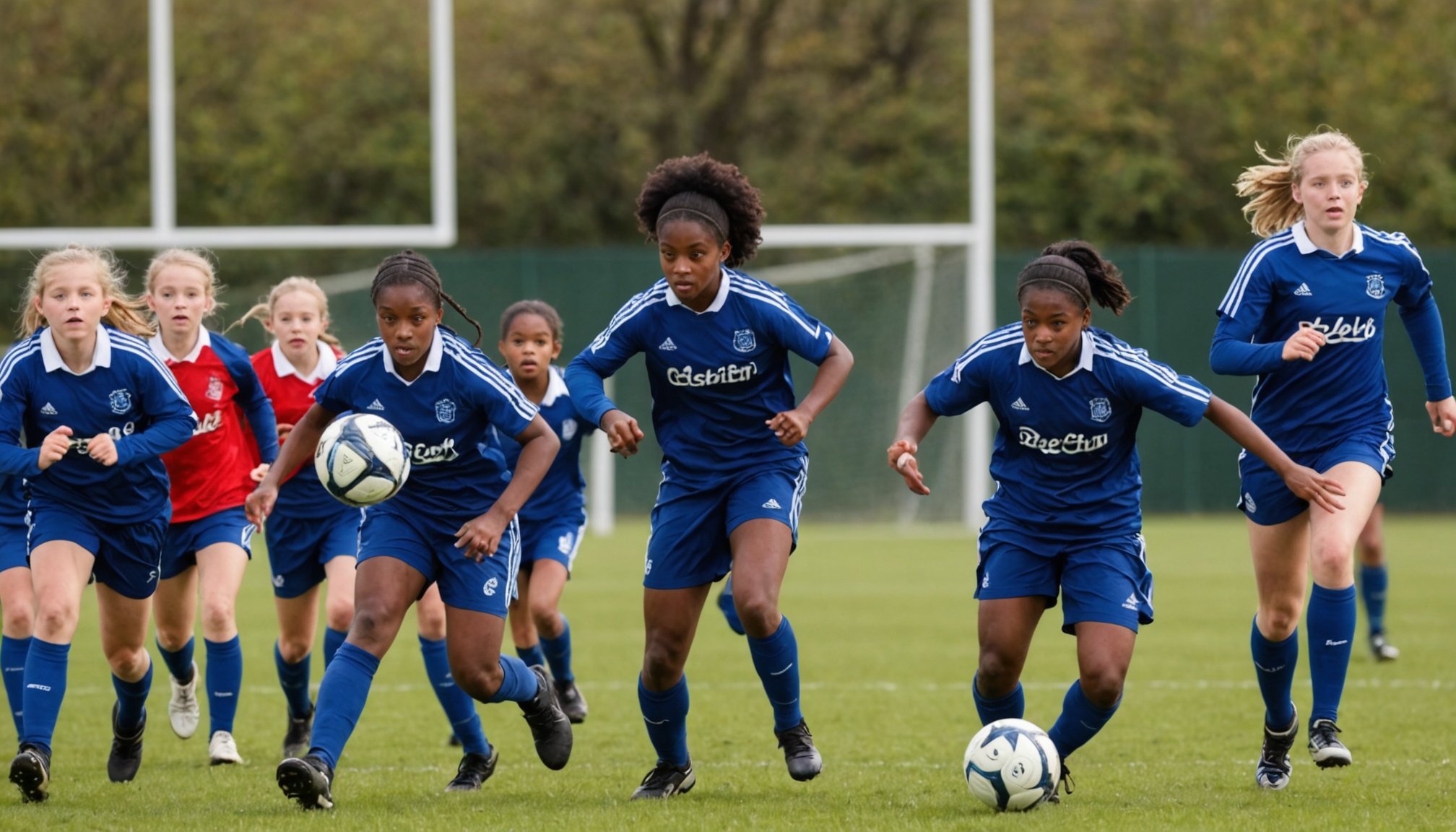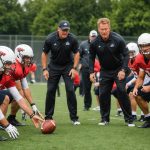Understanding the Importance of Diversity and Inclusion in School Sports
The role of diversity in sports cannot be overstated when it comes to enhancing student engagement. Diverse sports environments attract individuals from various backgrounds, enriching the experiences of all participants. Not only does it create a vibrant sports culture, but it also encourages students to engage with activities they might not have considered before, promoting broad participation.
Inclusion strategies play a pivotal role in ensuring that all students are welcome and encouraged to join sports programs. This can involve personalized coaching methods or adaptive sports equipment catering to diverse needs. These strategies make students feel valued, boosting their self-esteem and engagement levels.
Also to discover : Revolutionizing fencing officiating: how video replay empowers uk coaches in match decision-making
The impact of inclusion in sports extends beyond the field. Participation in inclusive sports programs can significantly enhance student well-being and social skills. Students learn to work as a team, respect differences, and foster friendships, leading to a positive school environment and improved interpersonal relationships.
Moreover, active participation in diverse sporting activities has the potential to improve academic performance. Engaging in sports can enhance concentration and discipline, skills that are transferable to the classroom. This holistic development underscores the necessity of prioritizing diversity and inclusion in school sports, benefitting students academically, socially, and personally.
Additional reading : Elevate your game: essential tips for uk beach volleyball players to master the sand court
Current Landscape of Diversity and Inclusion in UK Secondary School Sports
Examining the state of diversity and inclusion in UK secondary school sports reveals a mixed picture. Recent statistics on participation show that while efforts are being made to promote inclusivity, there remain notable barriers to inclusion. Participation rates across diverse groups such as ethnic minorities, girls, and individuals with disabilities often lag behind their peers.
Current initiatives are addressing these disparities by implementing more inclusive sports programs. For instance, schools are increasingly adopting flexible schemes that accommodate a variety of cultural and physical needs, enhancing accessibility and participation for all students. However, challenges persist. A lack of resources, infrastructure, or culturally-sensitive policies often impedes progress. Insufficient training for staff in diversity and inclusion also remains a significant hurdle.
There are, however, promising examples of schools that have successfully launched inclusive sports initiatives. In some case studies, schools have partnered with local sports clubs to create opportunities for underrepresented groups, thus fostering an environment of acceptance and cooperation. Such initiatives showcase the potential for secondary school sports to become more inclusive through targeted efforts and community engagement. Progress is evident, but sustained commitment is essential for wider change.
Creative Approaches to Empower Diversity and Inclusion
Addressing diversity and inclusion requires imaginative efforts that truly engage communities and individuals. This is where embracing innovative programs plays a crucial role in educational settings.
Grassroots Programs and Community Involvement
Community partnerships are vital in supporting school sports initiatives. Local organizations often spearhead collaborative initiatives that enrich student experiences. For example, grassroots programs can successfully create inclusive environments by involving local sports clubs to provide opportunities for underrepresented groups.
Successful examples include partnerships with community centres that promote access to equipment and facilities, encouraging participation from all students. Such initiatives can significantly enhance student engagement and boost the sense of belonging through teamwork.
Tailored Training and Development for Staff
Staff are central to fostering an inclusive environment. Investment in professional development opportunities focused on diversity ensures educators and coaches are equipped with the necessary skills. Engaging training sessions that emphasize inclusive practices help staff better understand diverse student needs.
Testimonials from educators highlight how these programs have transformed their approaches, leading to more effective communication and understanding within classrooms and sports fields alike.
Representation Matters: Diverse Role Models in Sports
Having diverse role models is critical in promoting student motivation. Schools can adopt strategies to involve athletes from various backgrounds in events, showcasing diversity in sports. This has a significant impact on encouraging students from similar backgrounds to participate actively, knowing they too can achieve greatness in their pursuits.
Best Practices and Sustainable Initiatives
Developing sustainable programs for diversity and inclusion in educational settings requires strategic planning and execution. Central to these efforts is fostering a culture that not only values inclusion but actively promotes representation across all school activities.
Establishing sustainable programs begins with actively involving community stakeholders and student voices in crafting comprehensive policies. Schools should consider appointing dedicated diversity officers or committees to ensure initiatives align with institutional goals and values. This foundational step ensures that programs are tailored to the specific needs of the community, enhancing their long-term impact.
The importance of a culture of inclusion cannot be overstated. By embedding inclusive values into the school ethos, schools encourage acceptance and understanding among students and staff alike. Promoting representation across literature, curricula, and extracurricular activities ensures that all students feel seen and valued.
Implementing best practices for monitoring and evaluating these efforts is crucial. Schools can establish clear benchmarks and employ data-driven approaches to assess the effectiveness of their programs. Regularly revisiting and refining strategies based on feedback and results helps sustain momentum and achieve meaningful, long-lasting change.
Ultimately, these initiatives not only enrich the educational environment but also prepare students to thrive in an increasingly diverse society.
Engaging Students: Voices from the Community
Student Testimonials and Experiences
Student engagement is pivotal in shaping educational environments, enhancing both learning and communication between faculty and students. Testimonials collected from diverse students reveal unique perspectives, emphasising the crucial role of feedback. For instance, Maria, a first-year science major, expressed feeling more integrated in her cohort due to the feedback workshops conducted. These platforms facilitated honest dialogue, directly influencing program improvement by addressing student concerns.
Actively incorporating student voices ensures their experiences and ideas are valued in future development efforts. Anthony, a third-year athlete, shared how his input led to more inclusive sports policies that better reflect the needs of all students. Students’ lived experiences provide insights that can drive tangible changes, making the education journey more engaging and relevant.
Building Peer Support Systems
Establishing strong mentoring and peer support systems fosters a sense of belonging. By linking students across varied backgrounds, it encourages inclusivity and camaraderie. Successful peer-led initiatives like the “Buddy Program” in the sports department have demonstrated significant benefits, where older students guide newcomers, easing their transition.
Creating Safe Spaces for Open Dialogue
Safe spaces are essential for students to express their thoughts on diversity. Open dialogue sessions allow for transparent conversations, promoting understanding and connection. Feedback sessions further enhance engagement by equipping educators with critical insights to foster an inclusive environment tailored to student needs.











